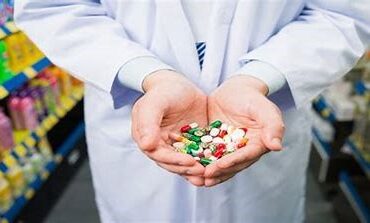Antibiotics have revolutionised the field of medicine, saving countless lives from deadly infections.
But have you ever wondered how these life-saving drugs are made?
In this article, we will explore the fascinating process of antibiotic production through fermentation.

The Power of Microorganisms
Microorganisms, such as bacteria and fungi, play a crucial role in the production of antibiotics.
These tiny organisms possess the ability to produce naturally occurring compounds that can inhibit the growth of harmful bacteria.
Scientists have harnessed this power and developed methods to mass-produce these antibiotics for medical use.
Fermentation: Nature’s Magic
Fermentation is a natural process that has been used by humans for centuries to produce various products like bread, beer, and cheese.
It involves harnessing the metabolic activities of microorganisms to convert one substance into another.
In the case of antibiotic production, fermentation serves as the key method.
Selecting the Right Microorganism
The first step in antibiotic production is selecting the right microorganism.
Scientists carefully screen thousands of strains to find those with the desired characteristics.
For example, if they are looking to produce penicillin, they search for strains of Penicillium mould that can efficiently produce the compound.
Nurturing the Microorganisms
Once the ideal strain of microorganism is identified, it needs to be nurtured in a controlled environment.
This involves providing them with optimal conditions for growth, including temperature, pH level, oxygen supply, and nutrient availability.
These factors are carefully monitored and adjusted to ensure maximum productivity.
The Fermentation Process
Now comes the heart of the process – fermentation itself.
The selected microorganisms are added to a large fermenter, which is essentially a giant stainless steel tank.
This tank is filled with a nutrient-rich broth, known as the fermentation medium, that provides the microorganisms with the necessary nutrients to thrive.
Feeding the Microorganisms
Just like humans need food to survive and grow, microorganisms require nourishment too.
The fermentation medium contains various ingredients such as sugars, amino acids, vitamins, and minerals that serve as food for the microorganisms.
These nutrients are carefully measured and added to the fermenter in precise quantities.
The Growth Phase
Once inside the fermenter, the microorganisms start multiplying rapidly.
They undergo a growth phase where they consume the nutrients in the fermentation medium and produce energy through metabolic processes.
As they multiply, their population increases exponentially, creating a dense culture within the fermenter.
Producing Antibiotics
As the microorganisms continue to grow, they also produce antibiotics as part of their natural defence mechanisms.
These antibiotics help them compete against other microorganisms in their environment.
In the controlled conditions of the fermenter, the production of antibiotics can be optimised by manipulating various factors like temperature and pH level.
Harvesting the Antibiotics
After a certain period of time, typically several days or weeks, the antibiotic concentration reaches its peak.
At this point, the fermentation process is stopped, and the antibiotics are harvested.
To do this, the fermented broth is separated from the microorganisms using methods like centrifugation or filtration.
Purification and Formulation
The collected broth contains not only the desired antibiotics but also impurities and unwanted substances.
Therefore, it needs to go through a purification process to remove these contaminants.
Techniques like chromatography and crystallisation are used to isolate and purify the antibiotics.
Once purified, the antibiotics are formulated into a suitable dosage form, such as tablets or injections.
Quality Control
Before the antibiotics can be released for medical use, they undergo rigorous quality control tests.
These tests ensure that the drugs meet strict standards of purity, potency, and safety.
The antibiotics are analysed for their chemical composition, stability, and effectiveness against specific bacteria.
Only after passing these tests are the antibiotics deemed fit for human consumption.
Meeting Global Demand
The demand for antibiotics is enormous, with millions of people relying on them to combat infections worldwide.
To meet this global demand, pharmaceutical companies have established large-scale fermentation facilities capable of producing massive quantities of antibiotics.
These facilities operate around the clock, ensuring a steady supply of these life-saving drugs.
Innovation in Antibiotic Production
As technology advances, so does the field of antibiotic production.
Scientists are constantly exploring new ways to improve the efficiency and sustainability of the fermentation process.
They are developing innovative techniques like genetic engineering to enhance the productivity of microorganisms or even create entirely new antibiotics.
In conclusion, the production of antibiotics through fermentation is a remarkable feat of science and technology.
By harnessing the power of microorganisms and optimising their growth conditions, we can mass-produce these life-saving drugs.
With ongoing research and innovation, we can continue to stay one step ahead in the battle against infectious diseases.
